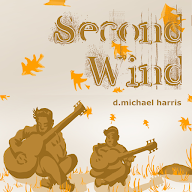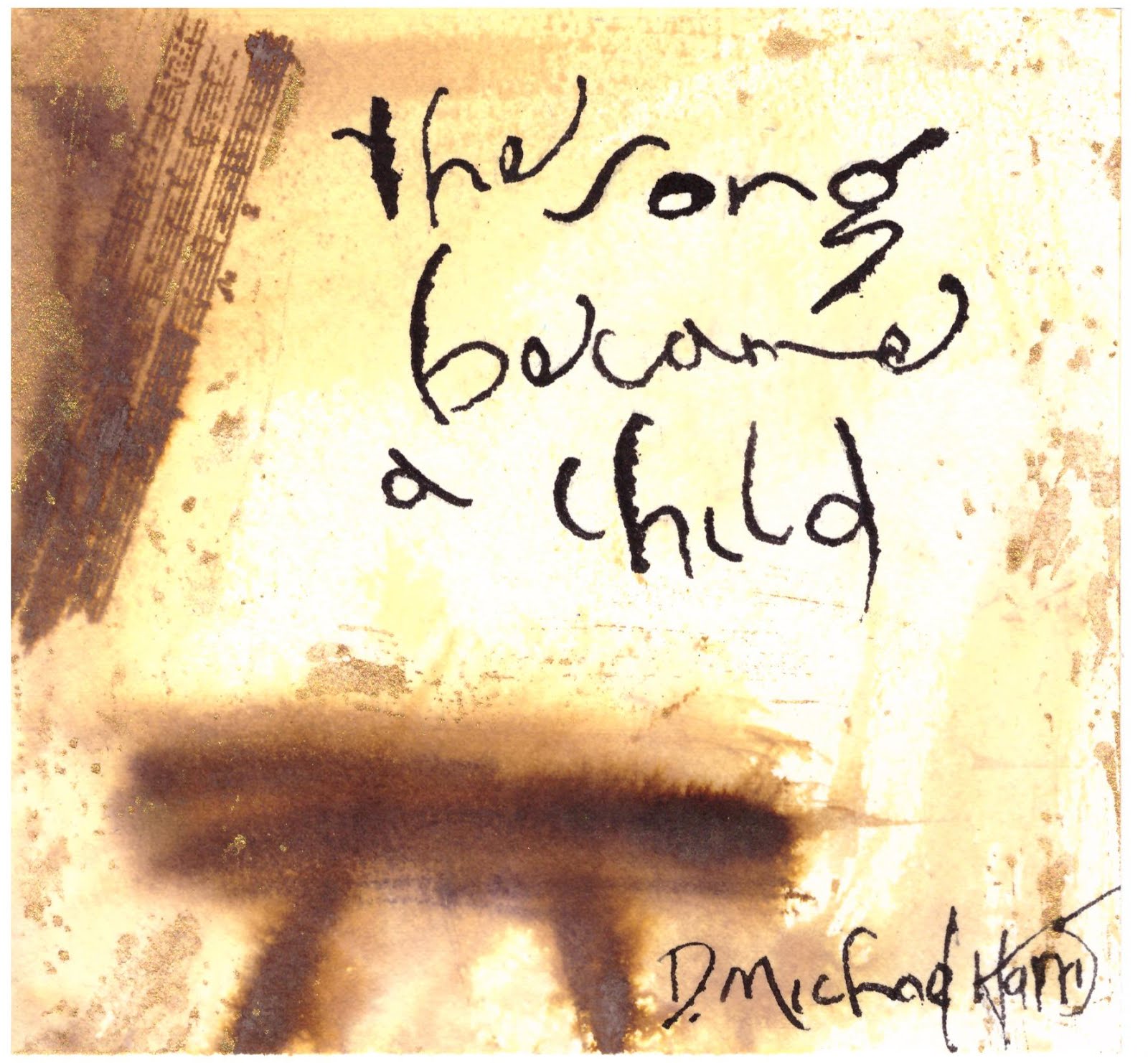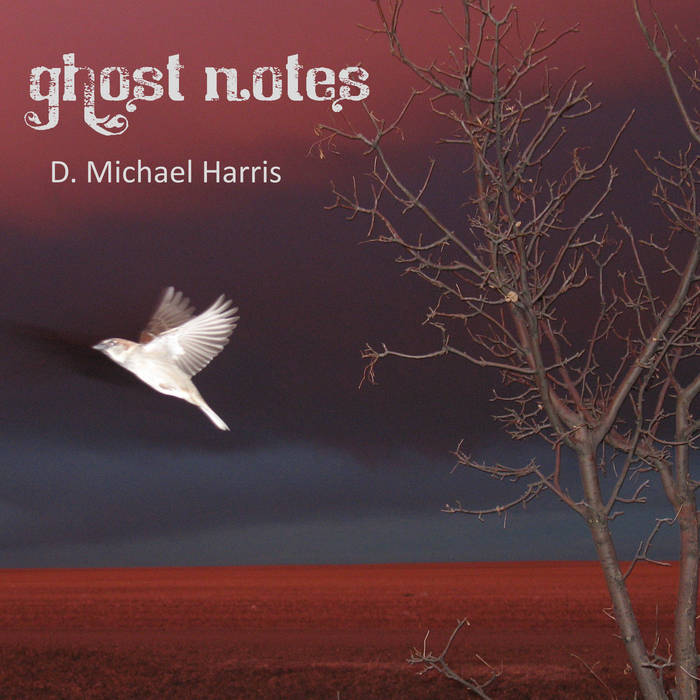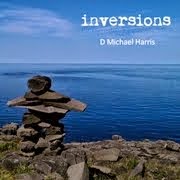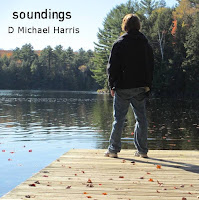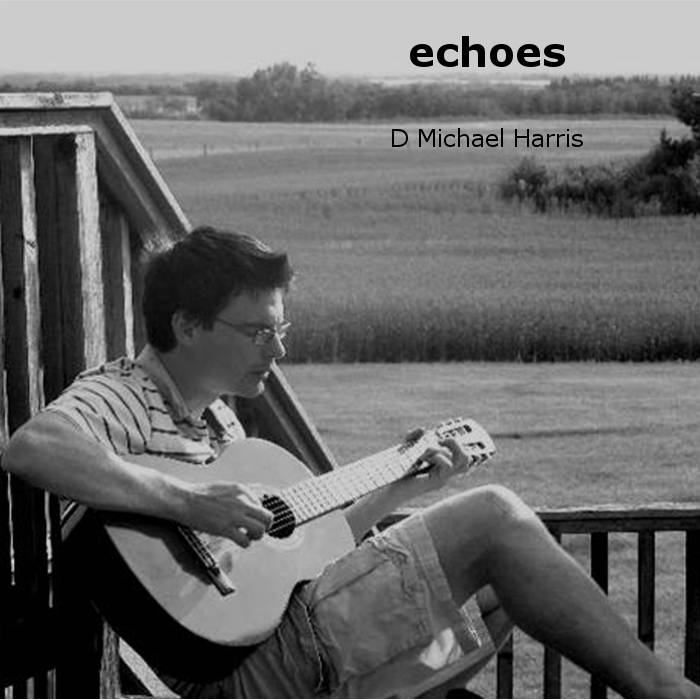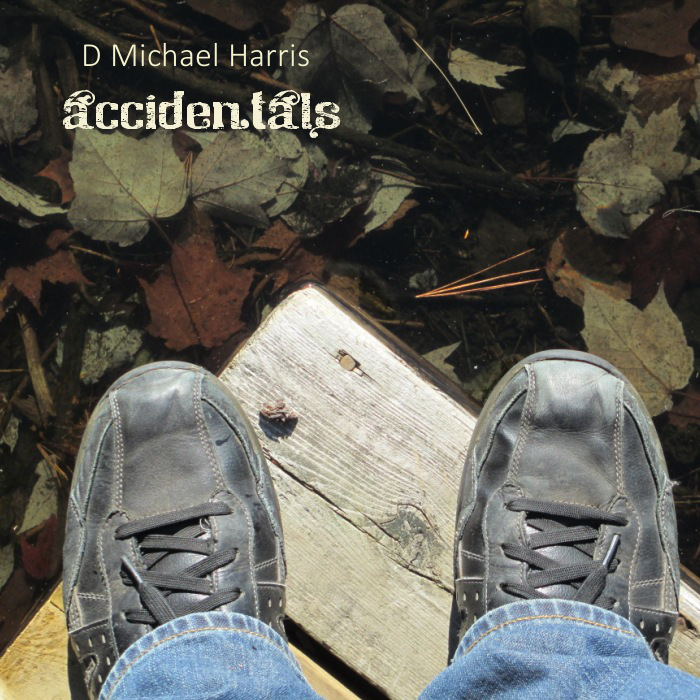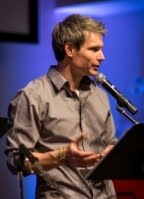The Lamb Who Stands at the Centre of the Universe
I had never before encountered such animosity to a belief that I had found to be beautiful, compelling, and life giving, and it took me aback. They looked up all the usual references in the Bible that are often marshalled in defense of the doctrine of the Trinity, and presented exegetical arguments—faulty exegetical arguments, I later learned—in an attempt to convince me that God is not, in fact, Three-in-One.
Looking back, it’s curious to me that my non-Trinitarian neighbours that day didn’t ever look up Revelation 5:6 for our little game of proof-text ping pong. It’s Curious, but not surprising. Because, although it’s not often discussed in traditional defenses of the Trinity, I think Revelation 5:6 gives us one of the most profound, mysterious, and compelling visions of God as Three-in-One as I’ve ever come across in the New Testament.
St. John the Divine has just received an awe-inspiring glimpse into the Throne Room of God, where he’s seen 24 Elders (presumably representative of the whole People of God, both the 12 Tribes of Israel and the 12 Apostles of the Church), and he’s seen 4 living creatures (apparently 4 angelic beings, though they also seem representative in some way of the Creation itself, since the number 4 is usually associated with the Creation, and they take the shape of creatures associated with the creation—lions, oxen, eagles, men). There are flashes of lightning and peals of thunder, crowns being laid down and rainbows scintillating with glory.
Before discussing Revelation 5:6, we should note that in the heavenly vision of Chapter 4, John sees the Throne of the Almighty, and before the throne are 7 lamps (significantly, the word here is different than the word used in chapters 2-3 to describe the 7 lampstands of the 7 churches). Here, John clearly identifies the seven lamps as the “Sevenold Spirit of God” (4:5).
Although he glimpses someone sitting on the throne, the appearance of whoever it is on the Throne is describes in vague terms: “He had the appearance of jasper and ruby.” The image speaks of God’s beauty, his radiance, his glory, his infinite worth, but notably, it does not tell us much about God’s literal appearance; that is to say, we’re not supposed to imagine a huge piece of red crystal sitting on the throne—a literal ruby. Though John sees the Throne, and glimpses someone sitting there, he cannot truly tell what he saw. It reminds me a bit of Moses, being permitted only to see the back of God’s glory as it passed, in Exodus 33.
But then we come to Revelation 5. Here, after no one has been found worthy to open the scroll of God’s plan for bringing Justice to the earth and bringing human history to its final conclusion, John sees a lamb, looking as though it has been slain from the creation of the world.
Here is where things get interesting, and profoundly Trinitarian. As will become clear by the end of the book, the Lamb is the Lord Jesus Christ, slain for the world through his death on the cross. Notably, though, John tells us that this lamb is “standing in the midst of the throne” that is to say, at its very centre. He does not say the lamb is “sitting on the Throne,” of course, because there is already someone sitting there, but if the Lamb is standing “at the centre of the throne,” then it is impossible to extract his identity from the identity of the one sitting there. One commentor puts it like this: “Jesus Christ, the crucified, stands at the centre of the throne because he stands at the centre of the Almighty. Jesus Christ comes from and lives in the very centre of the living God! The heart of the Almighty is the heart of the Lamb” (Darrell Johnson, Discipleship on the Edge, p. 157).
It gets even more interesting, and more Trinitarian, though. Because in his description of this Lamb, John tells us that he has 7 eyes. The strangeness of a seven-eyed lamb is itself enough to tell us that this must be a symbolic description, but just to be sure, John explains: “the eyes are the Sevenfold Spirit of God.” Most commentors suggest that this reference to the “Seven Spirits of God” is picking up on Isaiah 11:2-3, where we’re told that the Spirit of the Lord will rest on the Messiah in his coming, and then the Lord’s Spirit is described with seven epithets: the Spirit of the Lord, the Spirit of Wisdom, the Spirit of Understanding, the Spirit of Counsel, the Spirit of Might, the Spirit of Knowledge, and the Fear of the Lord. Earlier in Revelation 1, John greets his readers in the name of Jesus (the one who was and is and is to come), and the “Seven Spirits which are before his throne” (1:1); later, in Chapter 3, its stated even more explicitly, that Jesus is the one who “has the Seven Spirits of God.”
The Sevenfold Spirit of God in Revelation 5, then, seems to be a symbolic way of speaking about the Holy Spirit specifically, the “Spirit of the Lord” that rests on the Messiah, the Spirit that is actively at work in the world (the very eyes of the Lamb himself).
Once you connect all these dots, you can’t help but do the math here: if the Sevenfold Spirit of God—the Holy Spirit—is the “eyes” of the Lamb, and the Lamb is standing at the centre of the throne, one which the Almighty himself is seated, then the Holy Spirit, too, is standing there, at the centre of the Lamb, at the centre of God’s throne.
Revelation 5 has come to be, for me, one of the most goose-bump-inducing passages of the whole Bible. It’s all veiled in the mysterious symbolism of apocalyptic imagery, of course, but here we are offered a glimpse into the life of God himself—as much a glimpse, anyways, as anyone could bear, and what we see when we dare to turn our eyes to his One Single Throne, are three.
But these Three are placed in such a way, in such a place, as there could only ever, truly be One there.
So it is true, in one sense, what my non-Trinitarian neighbours were trying to tell me that day. You cannot find the word “Trinity” anywhere in the Bible. But if there is some better way to explain what John saw that day in the Throne Room of God, some doctrine or conceptualization of the divine that can account for a Throne that has the Almighty seated on it and the Lamb standing at its centre, I’ve not yet come across it.
Labels: revelation, trinity
The Last Ride of Jesus and John Wayne, a song
The warrior was waiting for Billy the Kid
When he rode into town
He started cursading for the quick and the dead
With a Bible and a gun
He said: Calling all you outlaws
With your promises to keep
There's a way to save your souls
If your man enough to believe
That Billy's riding shotgun
For Jesus and John Wayne
With a pose of his lost boys
Holding up the train
Making deals with the devil
And trading pain for gain
And saddling their horses for the last ride
Of Jesus and John Wayne
The kid told the warrior to reach for the sky
When they take their last stand
To be a good soldier and never say die
And fight for the Promised Land
Calling all you outlaws
With your promises to keep
There's a way to save your souls
If your man enough to believe
That Billy's riding shotgun
For Jesus and John Wayne
With a pose of his lost boys
Holding up the train
Making deals with the devil
And trading pain for gain
And saddling their horses for the last ride
Of Jesus and John Wayne
And you can never let us see
There's a boy insde the man
In the shadows, under lock and key
And you can never let it go
There's a truth inside the child
It's a secret none of us can know
'Cause Billy's riding shotgun
For Jesus and John Wayne
With a pose of his lost boys
Holding up the train
Making deals with the devil
And trading pain for gain
And saddling their horses for the last ride
Of Jesus and John Wayne
Labels: songs
Music, the Brain, and Ecstasy, a book review
“Music makes us larger than we really are,” he writes, “and the world more orderly than it really is. We respond, not just to the beauty of the sustained deep relations that are revealed, but also to the fact of our perceiving them. As our brains are thrown into overdrive, we feel our very existence expand and realize that we can be more than we normally are, and the world is more than it seems.”
Listening to Beethoven’s Piano Concerto No. 5 certainly has that effect on me, and, mysteriously enough, it continues to have that effect, no matter how often I hear it.
Jourdain argues that music "works" on us by triggering deep physiological responses in our neurological structures that are evolutionarily “trained” to perceive subtle layers in sonic relations—the inner relationships, that is, between different sounds as they occur in an organized sequence. He suggests that this ability is the result of eons of evolution that refined our sensitivity to sonic relations, as a way of heightening our chances of survival. As a result, our brains are structurally attuned to the subtle (and often not-so subtle) relationships between sounds that well-crafted music presents us with. As a result, music has a unique ability to engage both the right and left hemispheres of our brains at once, stimulating pleasure both through its orderly structure, and through its close association with memories, emotion, and sensory arousal.
This physiological response, he goes on to suggest, interacts on a deep subconscious level with our specific cultural conditioning, which we use to make meaning out of the organized sounds of a musical performance. Our culture trains us to expect certain things of the music we hear, prompting reactions of delight (or disgust) as those expectations are met and/or subverted. At the same time, our bodies resonate physically with the rhythmic patterns of music, responding kinesthetically to the elegant structure it imposes on time. All of these responses—the neurological, psychological, kinesthetic, and cultural—he argues, were inadvertently wired into the human animal, as evolutionary processes naturally selected certain traits that better-fitted us for survival, helping us to avoid being eaten by the proverbial lion on the primordial savannah, and predisposing us to a kind of social interaction that would better ensure the propagation of our species.
I’m not sure how directly he argues that last point, but it is certainly one of the corollaries of his study. The seemingly-spiritual response music produces in us is really little more than a pleasurable biproduct of evolutionary forces that were themselves the result of decidedly unmusical events: those of our ancient ancestors who were less adept at interpreting the meaning implicit in that subtle rustling in the grass on the savannah died in the springing lion’s paws; those who were better at it survived, and passed on to subsequent generations a deep sensitivity to the meaning of sound. Those of our primaeval parents who responded well to the socially organizing effect of cooperative sound-making stayed together and were more likely to survive and pass on that predilection to their progeny. Those who didn’t simply died, and passed on nothing.
While Jourdain’s exploration of the phenomenology of music was profoundly fascinating, I have to be honest that, as a Christian reader, I felt it proved far more than it meant to. The word “ecstasy” literally means “standing outside one’s self" (or something along those lines). But if Jourdain’s fundamental assumptions are true, and meaning is only to be found in the random forces of a faceless evolution, then there is, actually, nowhere outside ourselves to stand. Throughout the book, he continually refers to things like the “elegant structures” of music, making value judgements regarding how “beautiful” some forms of music are and how crude others. Yet throughout my reading, I kept wondering: on what basis—if his basic argument was true—could we safely speak of music in terms of its "beauty" or "elegance"? Probably the most we could say is that certain types of organized sound are more effective at achieving its evolutionary effect, and others less so, but this is a far cry from describing something as intrinsically beautiful.
For all his talk about ecstasy, Jourdain has very little to say concretely about how and why music transports us the way it does, and where, in particular, it is transporting us to. As a Christian reader, in fact, the overall effect of Music, The Brain, And Ecstasy on me was not to cause me to stand in awe at the mysterious results of eons of blind evolutionary processes. Rather, it led me continually back to my deepest faith commitments: if the effect of music on the human psyche really is as complex and mysterious as Jourdain continually insists it is, where could so complex and mysterious a phenomenon have come from?
More to the point: what is really happening in us, when carefully structured and aesthetically pleasing sounds strike our bodies and elicit a response that can only be described, for lack of a better word, as spiritual? The evolutionary answers to those questions—like the ones Jourdain proposes—leave me personally feeling empty and cold. In the words of Puddleglum to the godless Green Witch: “Suppose this black pit of a kingdom of yours is the only world. Well, it strikes me as a pretty poor one, and the made-up things seem a good deal more important than the real ones. That’s why I’m going to live as like a Narnian as I can, even if there isn’t Narnia.”
If you’re not a fan of Narnia, perhaps a more concrete quote would help. In his book The Devil’s Delusion, philosopher David Belinski surveys the many confident claims of the evolutionary atheist—and he’s writing as an atheist himself, mind you—but he looks at the wild claims evolutionary atheism makes, of having made the “God Illusion” unnecessary. At the end of his survey he offers this humble acknowledgement: “We live by love and longing, death, and the devastation that time imposes. How did [these things] enter the world? And why? The world of the physical sciences is not our world, and if our world has things in it that cannot be explained in their terms, then we must search elsewhere for their explanation.”
The best of music, I think, puts us in poignant remembrance of the love and longing, the death and devastation that indeed marks our existence, assuring us that there are things in this world that cannot be explained purely in terms of the physical sciences; and whatever else is happening when a rapturous—or stirring, or alarming, or exciting—piece of music washes over us, and we feel it, and respond, we are being pointed out of our world to another. Not that the music itself can bring us there, but it reminds us that such a place exists, a place where the most satisfying answers of all are offered us. To quote C. S. Lewis in quite a different vein: "If I find in myself desires that nothing in this world can satisfy, the most probably explanation is that I was made for another world." It is our longing for that other world, I think, that the aesthetic effect of music stirs up in us.
It's not for nothing that even in the earliest biblical witness, people responded to their experience of God in song, and in the fullest glimpse of his throne room that we're offered, we're told it's pulsing with the indescribable music of heaven.




